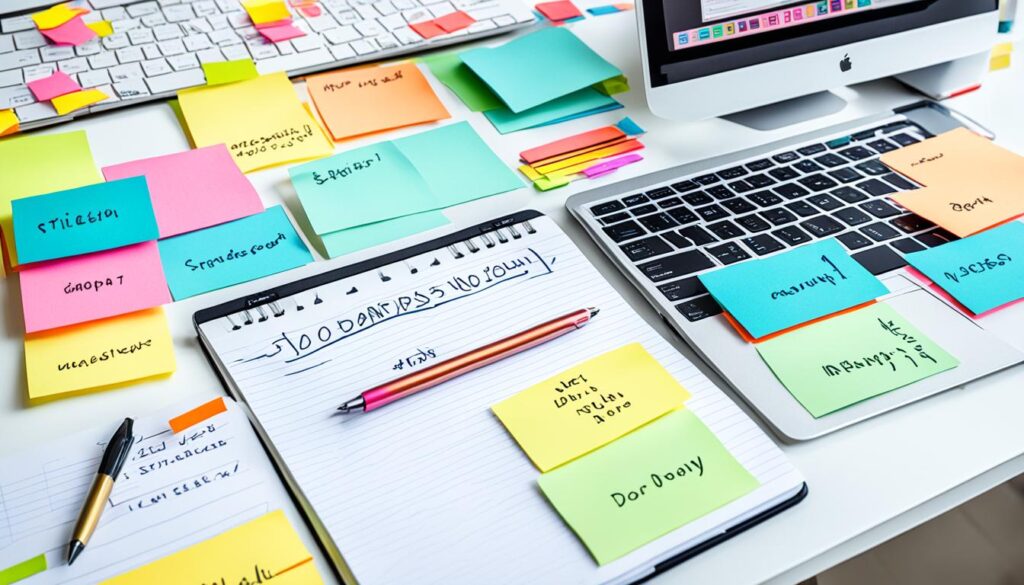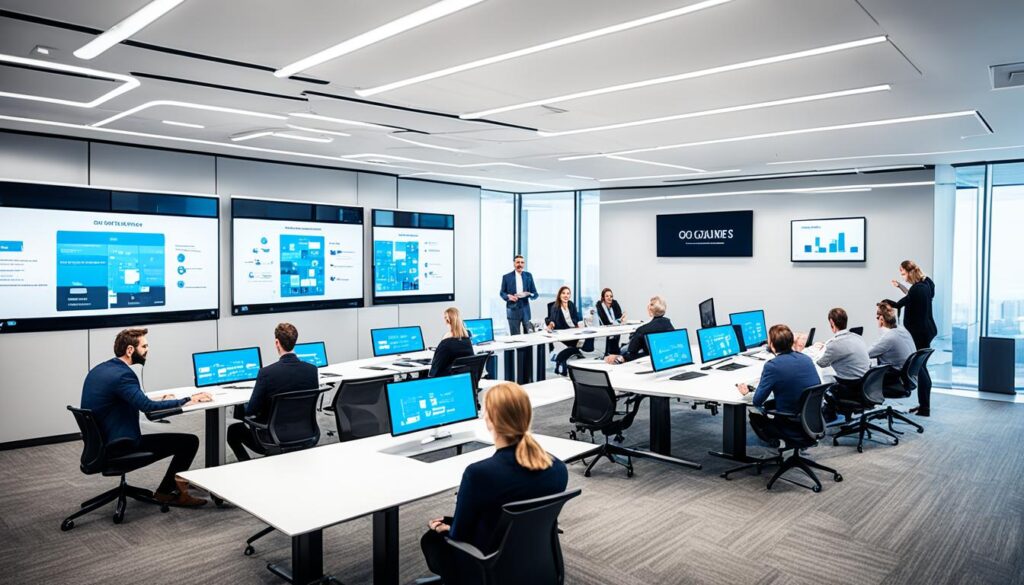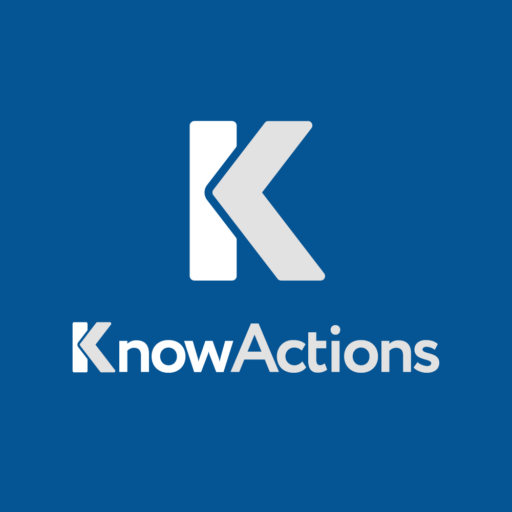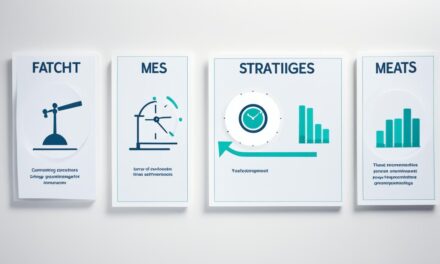Did you know that a single weekly meeting of mid-level managers can cost organizations up to $15 million a year1? This figure highlights the urgent need for improving meeting efficiency in today’s fast-paced business landscape. As we enter 2024, the ability to conduct productive discussions and optimize time is more critical than ever.
With remote work becoming the standard, companies like GitLab, an all-remote entity with over 1,300 employees, have thrived with virtual meetings and asynchronous communication2. Their “Handbook First” approach, which emphasizes documentation and efficient information sharing, is setting a new benchmark for meeting management.
This guide offers practical strategies for boosting meeting efficiency, focusing on preparation, facilitation, and follow-up. We’ll discuss how to set clear objectives, create detailed agendas, and use technology to enhance collaboration. By adopting these methods, organizations can turn their meetings into powerful tools for progress and decision-making.
Key Takeaways
- Inefficient meetings can have significant financial implications for organizations
- Clear objectives and detailed agendas are essential for productive meetings
- Asynchronous communication can enhance efficiency in remote work settings
- Leveraging technology and visual aids can improve meeting effectiveness
- Proper evaluation and follow-up are crucial for continuous improvement
- Encouraging equal participation maximizes team collaboration and productivity
The Importance of Meeting Efficiency in Modern Business
Meeting efficiency is vital for the productivity and success of modern businesses. In today’s fast-paced work environment, time is a precious resource. Companies that manage their meetings effectively can significantly impact their overall performance.
Impact on Productivity and Time Management
Efficient meetings are crucial for boosting productivity and enhancing time management. A study showed that 61% of executives found half of their decision-making time in meetings to be ineffective3. This underscores the need for better meeting strategies. Leaders should allocate half of their working time to unscheduled activities, fostering flexibility and spontaneous problem-solving3.
Financial Implications of Inefficient Meetings
Inefficient meetings can lead to significant financial losses for organizations. To combat this, some firms set strict limits on meeting time. For example, Hugo limits internal meetings to no more than 10% of employees’ time4. This method not only saves time but also results in substantial cost savings and boosts productivity.
Employee Satisfaction and Engagement
Well-structured meetings enhance employee satisfaction and engagement. Executives who manage their time well spend 34% interacting with external stakeholders, 39% in internal meetings, and 24% working independently3. Moreover, 85% of effective time managers report strong support in scheduling and time allocation3.
| Aspect | Efficient Meetings | Inefficient Meetings |
|---|---|---|
| Time Management | Balanced allocation of time | Excessive time spent in meetings |
| Decision Quality | High-quality, timely decisions | Delayed or poor-quality decisions |
| Employee Engagement | Increased satisfaction and productivity | Reduced engagement and motivation |
By prioritizing meeting efficiency, businesses can foster a positive meeting culture. This culture improves productivity, enhances time management, and increases employee satisfaction. Tools like meeting productivity hubs can lead to swift efficiency improvements across the organization4.
Setting Clear Objectives for Every Meeting
In 2024, businesses are focusing on maximizing meeting efficiency by setting clear objectives for every gathering5. This approach is essential for both strategic and routine meetings. By defining specific goals, teams can ensure productive outcomes and avoid wasting time.
Meeting objectives differ based on their purpose. For instance, brainstorming sessions aim to generate new ideas, while decision-making meetings seek consensus on key priorities5. Planning meetings often involve devising strategies for new products or initiatives5. All meetings benefit from well-defined objectives.
To create effective meeting objectives, consider using the SMART framework. SMART stands for Specific, Measurable, Achievable, Relevant, and Time-bound6. This approach ensures your goals are clear and attainable within the meeting’s timeframe.
Here’s a table showcasing examples of SMART objectives for different meeting types:
| Meeting Type | SMART Objective |
|---|---|
| Brainstorming | Generate at least ten new product ideas within a 60-minute session |
| Decision-Making | Reach consensus on top three marketing priorities for next quarter in 45 minutes |
| Review | Evaluate current task performance against criteria and identify gaps within one hour |
| Planning | Develop a detailed marketing strategy for new product launch in 90 minutes |
By setting clear objectives, you can significantly improve meeting efficiency. Studies show that employees spend an average of 37 percent of their time in meetings, with 47 percent considering them the top time-waster in their workday7. Clear objectives help combat this issue by providing focus and direction.
Remember to share your meeting objectives along with the agenda. This practice ensures all participants understand the purpose and can prepare accordingly, leading to more productive discussions and better outcomes.
Creating and Distributing Effective Meeting Agendas
Effective agenda management is vital for successful meetings. A well-designed agenda ensures team members are prepared, time is allocated efficiently, and discussions stay focused8. It’s essential for productive meetings and managing time effectively.
Key Components of a Productive Agenda
A productive agenda outlines specific time slots for each topic, sets clear objectives, and includes relevant discussion points. By listing topics as questions, it helps in focusing discussions and making decisions8. Assigning discussion leaders helps them prepare, boosting the meeting’s efficiency.

Timing and Distribution Best Practices
Send agendas early with calendar invites to help participants prepare. Consider the complexity of topics and the team size when determining the meeting length. Smart tools can streamline this process, ensuring agendas are distributed on time and participants are ready.
Using Agenda Templates for Consistency
Agenda templates ensure consistency and efficiency in planning meetings. They offer a structure that can be tailored for different meeting types, saving time and guaranteeing all crucial elements are covered.
| Meeting Type | Key Agenda Elements |
|---|---|
| One-on-One | Progress updates, challenges, goals |
| Team Meeting | Project status, action items, brainstorming |
| Board Meeting | Financial review, strategic planning, voting items |
By adopting these agenda management strategies, teams can greatly enhance their meeting efficiency and productivity9. Effective agendas lead to improved accountability, decision-making, and time management, ultimately driving organizational success.
Selecting the Right Participants and Roles
Choosing the right people for your meetings and assigning roles is vital for effective team collaboration. Studies reveal a strong link between meeting productivity and the organizers and facilitators10. It’s essential to keep the attendee list concise, focusing on those who can add significant value.
Experts recommend that the most productive meetings have fewer than eight attendees11. This matches Amazon’s ‘two pizza rule,’ which caps internal meetings at a size that can be fed by two pizzas11. By selecting participants wisely, you ensure everyone can collaborate and share their expertise effectively.
Assigning roles is crucial for meeting success. Every meeting needs a leader to set the rules, keep time, and keep everyone engaged11. Other vital roles include:
- Facilitator: Guides discussion and decision-making
- Note-taker: Records minutes and action items
- Timekeeper: Ensures the agenda stays on track
- Tech Host: Manages virtual meeting platforms
- Chat Moderator: Monitors online discussions
Clear roles foster an inclusive workplace and boost productivity10. In virtual meetings, consider a Vibe Watcher to monitor nonverbal cues10. Effective role distribution ensures smoother meetings and better results.
| Role | Responsibilities | Impact on Meeting Efficiency |
|---|---|---|
| Leader | Set ground rules, manage time, ensure engagement | 84% increase in meeting success rate |
| Facilitator | Guide discussion, foster inclusive environment | 76% increase in productive outcomes |
| Note-taker | Record minutes, capture action items | 79% improvement in follow-through |
| Tech Host | Manage virtual platforms, resolve technical issues | 65% reduction in meeting disruptions |
By selecting participants and assigning clear roles, you can significantly enhance meeting efficiency and team collaboration. Meetings with defined roles see an 82% drop in disruptions and tension12. This method ensures everyone contributes meaningfully, leading to more productive and engaging meetings.
Meeting Efficiency: Strategies for Time Optimization
Effective time management is essential for productive meetings. By adopting smart strategies, you can enhance your meeting efficiency and optimize your time.
Time Boxing Techniques
Time boxing is a valuable tool for managing meetings. Assign specific time slots for each agenda item to maintain focus. The morning, especially around 9:30 AM, is highly productive for focused work13. Use this insight to schedule crucial meetings when team energy is highest.
Managing Discussion Flow
Efficient moderation of discussions is crucial for meeting success. Encourage brief contributions and steer conversations back on track. Decision-making processes like voting or consensus building streamline choices and boost accountability13. This method keeps the discussion productive and ensures everyone’s voice is heard.
Dealing with Off-Topic Conversations
Be proactive in keeping discussions aligned with the agenda and goals. Set clear rules for participation, including cell phone policies and ensuring balanced input from all attendees. Inviting the right people to meetings helps keep conversations focused and minimizes distractions13.
| Strategy | Benefit | Implementation |
|---|---|---|
| Time Boxing | Improved focus | Set specific durations for agenda items |
| Discussion Moderation | Enhanced productivity | Encourage concise input, redirect off-topic talk |
| Clear Guidelines | Minimized distractions | Establish participation rules, invite relevant attendees |
By applying these strategies, you can significantly boost meeting efficiency. Remember, poorly organized meetings could be costing companies $399 billion in the U.S. alone14. Investing time in optimizing your meeting processes can lead to substantial time and cost savings for your organization.
Leveraging Technology for Enhanced Meeting Productivity
Technology is crucial in making meetings more efficient and productive. Virtual meetings are now common, thanks to platforms like Zoom and Google Meet. These platforms enable real-time discussions and keep teams connected15. They offer features such as screen sharing and chat, making collaboration easy, no matter where team members are.
Collaborative tools are changing how teams collaborate. Tools like Slack and Microsoft Teams facilitate quick communication and file sharing15. Solutions like Asana and Trello provide visual interfaces for tracking tasks and monitoring progress, keeping teams aligned, even when they’re apart1516.

Meeting analytics are revolutionizing how we assess and enhance meeting efficiency. Tools like Time Doctor and Toggl offer detailed reports on time spent by employees, projects, and activities16. This information helps teams pinpoint areas for improvement and refine their meeting strategies.
| Technology | Purpose | Benefits |
|---|---|---|
| Video Conferencing | Virtual Meetings | Real-time discussions, screen sharing |
| Messaging Platforms | Quick Communication | File sharing, instant collaboration |
| Project Management Tools | Task Tracking | Visual progress monitoring, team alignment |
| Time-Tracking Software | Meeting Analytics | Effort analysis, efficiency improvement |
To fully benefit from these technologies, organizations should offer in-person training to show how they work and connect workflows16. By training capable users and blending technology with human interaction, teams can build strong bonds and achieve outstanding results in virtual meetings15.
Fostering Collaboration and Active Participation
Creating a collaborative environment is essential for successful meetings. Teams led by collaborative leaders experience a 10% increase in productivity, underscoring the value of teamwork17. Let’s delve into strategies to boost participation and ensure inclusive meetings.
Creating a Psychologically Safe Environment
Psychological safety is vital for open dialogue. When employees feel secure sharing their ideas, they become more engaged and perform better. Trust among team members enhances problem-solving and innovation18.
Techniques for Encouraging Input from All Attendees
To make meetings inclusive, give everyone a chance to speak. Active listening and clear communication improve understanding. This can prevent misunderstandings stemming from poor communication17. Valuing individual ideas fosters creativity and attracts talented team members19.
Balancing Diverse Perspectives
Diverse opinions enrich discussions and lead to superior outcomes. Employees spend about 31 hours monthly in unproductive meetings, highlighting the need for effective strategies17. Building personal relationships at work enhances collaboration and makes the company a desirable workplace19.
“The strength of the team is each individual member. The strength of each member is the team.” – Phil Jackson
By adopting these strategies, you can establish a collaborative environment. This environment ensures psychological safety and inclusive meetings, leading to more productive and engaging discussions.
Effective Decision-Making Processes in Meetings
Effective decision-making meetings are vital for businesses to succeed in 2024. These meetings unite leaders, managers, and team members to tackle crucial business decisions2021. They boost creativity and critical thinking, resulting in more thorough and informed decisions22.
In operations, these meetings align with organizational goals, refine processes, and optimize resource use. They delve into data and key performance indicators for data-driven decisions, enhancing operational outcomes22.
To enhance meeting efficiency, consider these strategies:
- Set context and prepare an agenda
- Empower participation from all attendees
- Exercise strong leadership
- Keep discussions focused
- Encourage note-taking
- Make decisions during the meeting
Effective decision-making involves information gathering, brainstorming, weighing pros and cons, and problem-solving to achieve consensus20. If reaching full agreement is hard, a vote among team members may be needed20.
Key roles in decision-making meetings include a facilitator, those with decision-making authority, and a notetaker to maintain focus and efficiency20. Suitable topics range from new hires and project approvals to budget planning and quarterly goal setting20.
| Meeting Component | Purpose | Impact on Decision-Making |
|---|---|---|
| Agenda Preparation | Ensure purposeful meetings | Improves focus and productivity |
| Participant Empowerment | Leverage diverse insights | Enhances decision quality |
| Note-taking | Boost engagement | Promotes critical thinking |
| In-meeting Decisions | Avoid email deferral | Accelerates decision implementation |
By adopting these strategies, organizations can build consensus and achieve better meeting outcomes. It’s crucial to follow up on decisions to gauge their impact on work processes, ensuring ongoing improvement in decision-making effectiveness21.
Post-Meeting Action Items and Follow-Up
Effective meetings hinge on the successful implementation of action items, ensuring team members depart with a clear grasp of their responsibilities23. This pivotal step converts abstract discussions into concrete results, propelling forward and maintaining accountability.
Assigning Clear Responsibilities
Delegating action items instills accountability among team members and guarantees timely task fulfillment23. Organizations with a robust culture of accountability exhibit 2.5 times higher performance levels than their counterparts24. The RACI matrix acts as a pivotal tool for internal accountability, delineating roles and expectations clearly25.
Setting Deadlines and Expectations
Defining action items with specific assignees and deadlines is essential for their successful execution23. To streamline these tasks, experts advocate for the Eisenhower matrix for prioritization and techniques like batching, time blocking, and the Pomodoro technique for scheduling25. However, it’s vital to avoid overloading team members with too many action items, as it can negatively impact productivity24.
Tracking Progress on Action Items
Centralizing the tracking of action items enhances team efficiency and productivity23. Platforms such as Monday.com, Trello, and Slack streamline this process, promoting collaboration and reducing email clutter24. Periodic reviews of action items through checklists, dashboards, or feedback surveys are vital for maintaining task oversight and adjusting strategies as needed25. This structured approach to Action Item Tracking and Meeting Follow-up cultivates a culture of Accountability, resulting in more efficient and productive teams232425.




